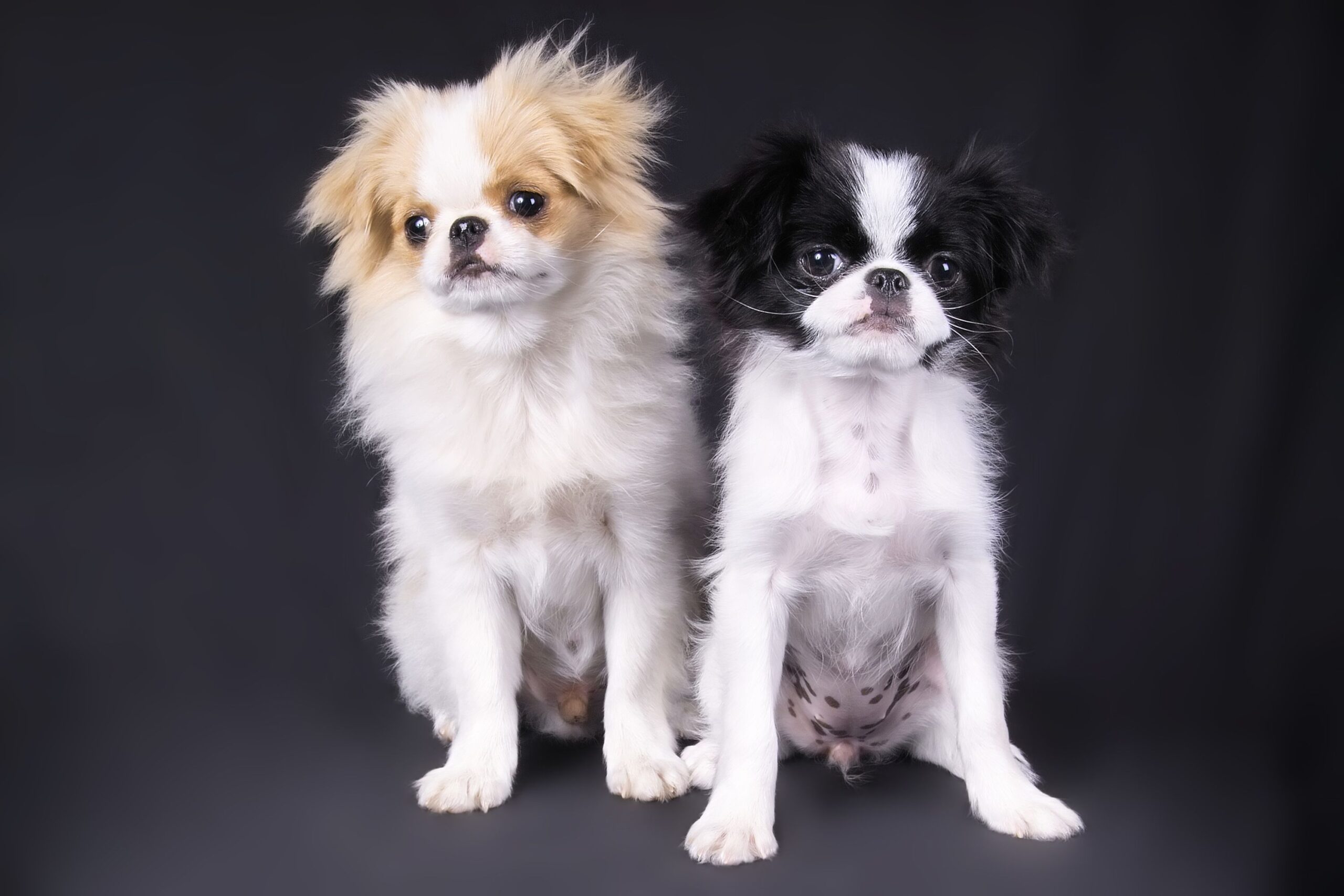Discover the top spots cats love to be petted! From their cheeks to the base of their tail, find out where to give your feline friend the best scratches and strokes. Plus, get tips on reading your cat's body language for a purr-fect petting session.
Key Takeaways:
- Most cats enjoy being pet on their head and chin.
- Cats also like to be pet along their back, especially near the base of their tail.
- Some cats enjoy having their cheeks and ears gently stroked.
- Avoid petting a cat's belly, as many cats find it uncomfortable or threatening.
- Always pay attention to your cat's body language and cues to determine where they like to be pet.
Places Cats Love to be Petted
When it comes to petting cats, there are certain spots that they absolutely love. One of the most common places that cats enjoy being petted is on their cheeks and under their chin. You can gently stroke these areas with your fingers or the back of your hand. Another favorite spot for cats is the base of their tail. They often raise their tail in excitement when you pet them there. Additionally, many cats love having their backs scratched, especially around their shoulder blades.
Some cats also enjoy being petted on their belly, but this can vary from cat to cat. It's important to approach this area with caution as not all cats appreciate belly rubs. If a cat exposes its belly to you, it may be a sign that it trusts you and wants some gentle strokes.
Tips:
- Observe your cat's body language to see which spots it enjoys being petted.
- Avoid touching sensitive areas like the stomach unless your cat invites you to do so.
- Always start with gentle strokes and pay attention to how your cat reacts.
How Many Spots Can You Pet a Cat?
A cat's body has several spots that can be petted and enjoyed by both the cat and the person doing the petting. The number of spots may vary from cat to cat, but on average, there are about 5-7 spots that cats love being petted.
Some common spots include the head, ears, cheeks, chin, neck, back, and base of the tail. These areas have a high concentration of scent glands and nerve endings, making them particularly pleasurable for cats when touched. Each cat may have its own preferences when it comes to petting spots, so it's important to pay attention to their body language and reactions.
Remember that not all cats enjoy being petted in the same way or in the same spots. Some cats may be more sensitive or have specific areas they don't like being touched. It's essential to respect your cat's boundaries and only pet them in places where they feel comfortable and relaxed.
Why Do Cats Purr When They're Being Petted?
Cats are known for their purring sound when they're being petted or stroked by their owners. This behavior is often associated with contentment and relaxation. When a cat purrs, it's a sign that they are feeling comfortable, safe, and happy.
But why do cats purr specifically when they're being petted? One reason is that petting releases endorphins in a cat's brain, which creates feelings of pleasure and happiness. The act of petting stimulates the cat's sensory nerves and triggers the release of these feel-good chemicals.
Purring can also serve as a way for cats to communicate their contentment to their owners. It's like a gentle "thank you" or a signal that they enjoy the attention and affection they're receiving. Cats may also purr as a way to bond with their owners and strengthen the human-cat relationship.
Summary:
- Cats purr when they're being petted as a sign of contentment and relaxation.
- Petting releases endorphins in a cat's brain, creating feelings of pleasure.
- Purring can be a way for cats to communicate their enjoyment and gratitude.
Tips:
- Listen for your cat's purring as an indication that they are enjoying the petting session.
- Pay attention to other body language cues, such as relaxed posture and closed eyes, to confirm your cat's happiness.
- Continue petting your cat as long as they show signs of enjoyment, but be mindful of overstimulation.
Avoid Touching This Spot on a Cat's Body
While there are many spots on a cat's body that they love being touched, there is one spot that should generally be avoided: the belly. Most cats have sensitive bellies, and touching or rubbing this area can often lead to discomfort or even aggression.
The reason for this sensitivity is rooted in a cat's instinctual behavior. In the wild, a cat's belly is a vulnerable spot that they protect from potential threats. When you try to touch their belly, it can trigger their defensive instincts, causing them to react defensively by biting or scratching.
Of course, there are exceptions to every rule, and some cats may enjoy gentle belly rubs. However, it's crucial to approach this area with caution and only attempt belly rubs if your cat explicitly invites you by exposing its belly and showing signs of relaxation.
Summary:
- Avoid touching a cat's belly as it is a sensitive spot for most cats.
- Cats may react defensively if their bellies are touched without invitation.
- Some cats may enjoy gentle belly rubs, but it varies from cat to cat.
Tips:
- Observe your cat's body language when approaching the belly area.
- If your cat exposes its belly and seems relaxed, you can try gentle strokes on the area.
- If your cat shows signs of discomfort or aggression, immediately stop touching the belly.
Do All Cats Like the Same Kind of Petting?
No, not all cats like the same kind of petting. Just like humans have different preferences when it comes to touch and physical contact, cats also have individual preferences for how they like to be petted. Some cats may enjoy long strokes from head to tail, while others prefer shorter strokes in specific areas.
It's important to pay attention to your cat's body language and reactions to determine their preferred petting style. Some cats may prefer gentle and slow strokes, while others may enjoy more vigorous rubbing. Experiment with different techniques and observe how your cat responds.
Additionally, each cat may have specific areas they enjoy being petted or areas they don't like being touched at all. Some cats may love having their ears rubbed, while others may find it irritating. Respect your cat's boundaries and focus on the spots they enjoy the most.

Summary:
- Cats have individual preferences for how they like to be petted.
- Pay attention to your cat's body language and reactions to determine their preferred petting style.
- Experiment with different techniques and observe how your cat responds.
Tips:
- Start with gentle strokes and gradually increase pressure if your cat seems to enjoy it.
- Observe which areas your cat reacts positively to and focus on those spots during petting sessions.
- Avoid touching areas where your cat shows signs of discomfort or tries to move away.
Signs That a Cat Enjoys Being Petted
Cats can't verbally express their feelings, but they communicate in other ways when they are enjoying being petted. Here are some signs that indicate a cat is enjoying the affection:
Purring: When a cat purrs while being petted, it's a clear indication of pleasure and contentment. The rhythmic vibrations of purring often accompany relaxed body language and closed eyes.
Kneading: Kneading is a behavior where cats push their paws in and out against a soft surface. When a cat kneads while being petted, it's a sign that they are feeling comfortable and happy.
Slow blinking: Cats communicate trust and relaxation through slow blinking. If your cat closes its eyes halfway or fully while you're petting them, it means they feel safe and at ease in your presence.
Relaxed body posture: A cat that enjoys being petted will have a relaxed body posture. Their muscles won't be tense, and they may even lean into the strokes or show other signs of physical relaxation.
Summary:
- Purring, kneading, slow blinking, and relaxed body posture indicate that a cat is enjoying being petted.
- These behaviors suggest feelings of pleasure, comfort, trust, and relaxation.
Tips:
- Pay attention to your cat's overall body language during petting sessions.
- If your cat shows multiple signs of enjoyment, continue with the same style of petting.
- Take note of any signs of discomfort or stress and adjust your approach accordingly.
The Best Ways to Pet a Cat
Petting a cat can be a wonderful bonding experience when done correctly. Here are some tips for the best ways to pet a cat:
Gentle strokes: Start with gentle strokes using either your fingers or the back of your hand. Avoid using too much pressure initially as some cats may be sensitive to touch.
Follow their preferences: Observe how your cat reacts to different types of touches. Some cats prefer long strokes from head to tail, while others may enjoy shorter strokes in specific areas like the cheeks or chin. Follow their lead and focus on the spots they enjoy.
Watch for cues: Pay attention to your cat's body language and reactions. If they lean into the strokes, purr, or show other signs of relaxation, it means they're enjoying the petting. If they move away, become tense, or show signs of irritation, it's a cue to stop or adjust your approach.
Respect boundaries: Cats have their own personal space and boundaries. If your cat doesn't want to be petted at a particular moment, don't force it. Give them space and try again later when they're more receptive.
Summary:
- Start with gentle strokes using either fingers or the back of your hand.
- Observe how your cat reacts to different types of touches and follow their preferences.
- Pay attention to your cat's body language and adjust your approach accordingly.
- Respect your cat's boundaries and give them space when needed.
Tips:
- If unsure about a specific spot, start with stroking areas like the head, cheeks, or chin.
- Avoid sudden movements or loud noises that may startle the cat during petting sessions.
- Take breaks during extended petting sessions to allow your cat some rest time.
What to Do If a Cat Doesn't Like Being Petted
Not all cats enjoy being petted, and it's important to respect their preferences. If you encounter a cat that doesn't like being petted or shows signs of discomfort during touch, here's what you can do:
Observe body language: Pay close attention to the cat's body language. Signs of discomfort may include tense posture, flattened ears, dilated pupils, or attempts to move away. If you notice these signs, it's best to stop petting and give the cat space.
Offer alternative forms of affection: Some cats may prefer other forms of interaction over physical touch. Engage in playtime with toys, offer treats, or provide a comfortable environment for the cat to explore and relax.
Respect boundaries: Cats have their own personal boundaries, and it's essential to respect them. Avoid forcing physical contact on a cat that clearly doesn't want it. Instead, focus on building trust through positive experiences and allowing the cat to approach you on its terms.
Consult a veterinarian or behaviorist: If your cat consistently shows aversion towards petting or exhibits aggressive behavior during touch, it may be beneficial to seek professional advice from a veterinarian or animal behaviorist. They can provide guidance tailored to your specific situation.
Summary:
- If a cat doesn't like being petted, observe their body language for signs of discomfort.
- Offer alternative forms of affection such as playtime or treats.
- Respect the cat's boundaries and allow them to approach you on their terms.
- Seek professional advice if the aversion towards petting persists or escalates into aggressive behavior.
Tips:
- Remember that each cat is unique and may have different preferences when it
The Physical Effects of Excessive or Improper Petting on Cats
Scratches and Skin Irritation
Excessive or improper petting can lead to scratches and skin irritation in cats. When a cat is overstimulated or handled roughly, they may react by scratching or biting. This can result in small cuts or abrasions on their skin. Additionally, some cats may have sensitive skin that becomes irritated with excessive petting, leading to redness, itching, and discomfort.
Muscle Strain and Joint Discomfort
Improper petting techniques, such as applying too much pressure or pulling on the cat's limbs, can cause muscle strain and joint discomfort. Cats have delicate bodies and their muscles and joints are not designed to withstand rough handling. Pulling on their legs or tail can lead to sprains or strains, while excessive pressure on their body can cause muscle soreness.
Preventing Physical Effects:
- Always approach a cat calmly and gently.
- Observe the cat's body language for signs of discomfort or overstimulation.
- Avoid pulling on the cat's limbs or tail.
- Use gentle strokes and avoid applying too much pressure.
- If the cat shows signs of irritation or discomfort, stop petting immediately.The Emotional Effects of Excessive or Improper Petting on Cats
Anxiety and Stress
Excessive or improper petting can contribute to anxiety and stress in cats. Some cats may become overwhelmed when they are constantly touched without breaks. They may start exhibiting signs of stress such as hiding, excessive grooming, aggression, or avoidance behaviors. Cats need periods of rest and solitude to feel secure in their environment.
Lack of Trust and Bonding Issues
If a cat consistently experiences excessive or improper petting, they may develop a lack of trust towards humans and bonding issues. Cats are sensitive creatures and negative experiences can impact their ability to form trusting relationships. They may become wary of being touched or avoid human interaction altogether.
Preventing Emotional Effects:
- Respect the cat's boundaries and give them space when needed.
- Allow the cat to initiate physical contact.
- Pay attention to their body language and respond accordingly.
- Provide a safe and quiet environment where the cat can retreat if they feel overwhelmed.
- Use positive reinforcement techniques, such as treats or playtime, to build trust and strengthen the bond with the cat.Conclusion: 1. Cats love being pet on their chin and cheeks. 2. The base of their tail is another favorite spot for cats. 3. Many cats enjoy gentle strokes along their back. 4. Some cats like having their ears gently rubbed or scratched.
Where do cats like to be petted most?
Cats typically enjoy being petted on their head, chin, and neck, but each cat has their own preferences. Some cats may also enjoy having their tails touched, while others may find it uncomfortable or even painful. It's important to observe your cat's reactions and respect their preferences when petting them.
Why do cats lift their bums when you pet them?
Typically, when you touch a cat and they lift their rear end and tail, it is considered normal cat behavior. This usually indicates that they are enjoying the interaction and would like you to continue scratching or petting them.
Do cats like having their chest rubbed?
Many cats enjoy being rubbed under their chin and on their chest. Some cats may also be comfortable with gentle pats on their back. It is important to avoid touching sensitive areas such as the paws, stomach, and tail. Paying attention to your cat's reactions while you touch him will give you an idea of his preferences.
Where do cats hate to be touched?
Most cats usually don't enjoy being touched on their stomach, legs, or tail. However, there are exceptions, as some cats may enjoy being touched anywhere and by anyone.
What do cats think when we kiss them?
Cats have a different understanding of kisses compared to humans. They have their own way of interpreting emotions and expressing affection. However, some cats do recognize that a kiss is a sign of love and affection from a human. It varies among cats, as some may enjoy kisses while others may not.
Does a cat trust you if it sleeps next to you?
Cats show their affection and trust in different ways. Spending time with you, grooming you, cuddling, and talking to you are all indications of a strong bond. When a cat shows you their belly or sleeps on or near you, it is a sign of trust.

















